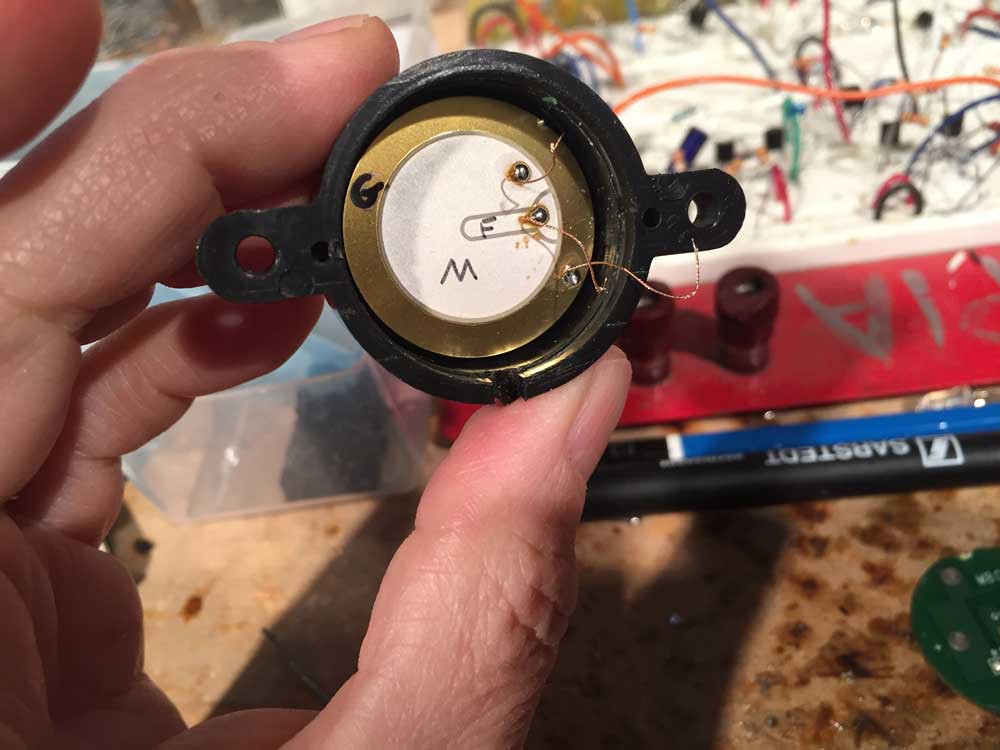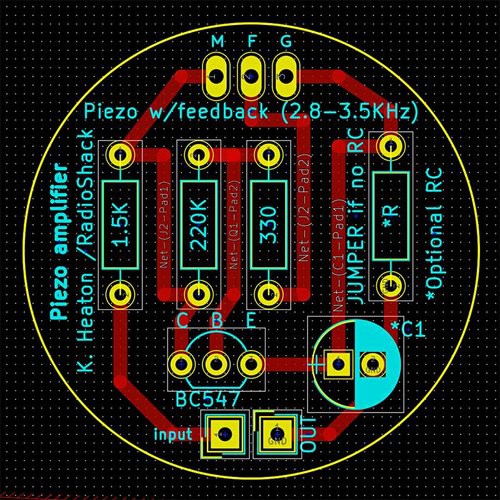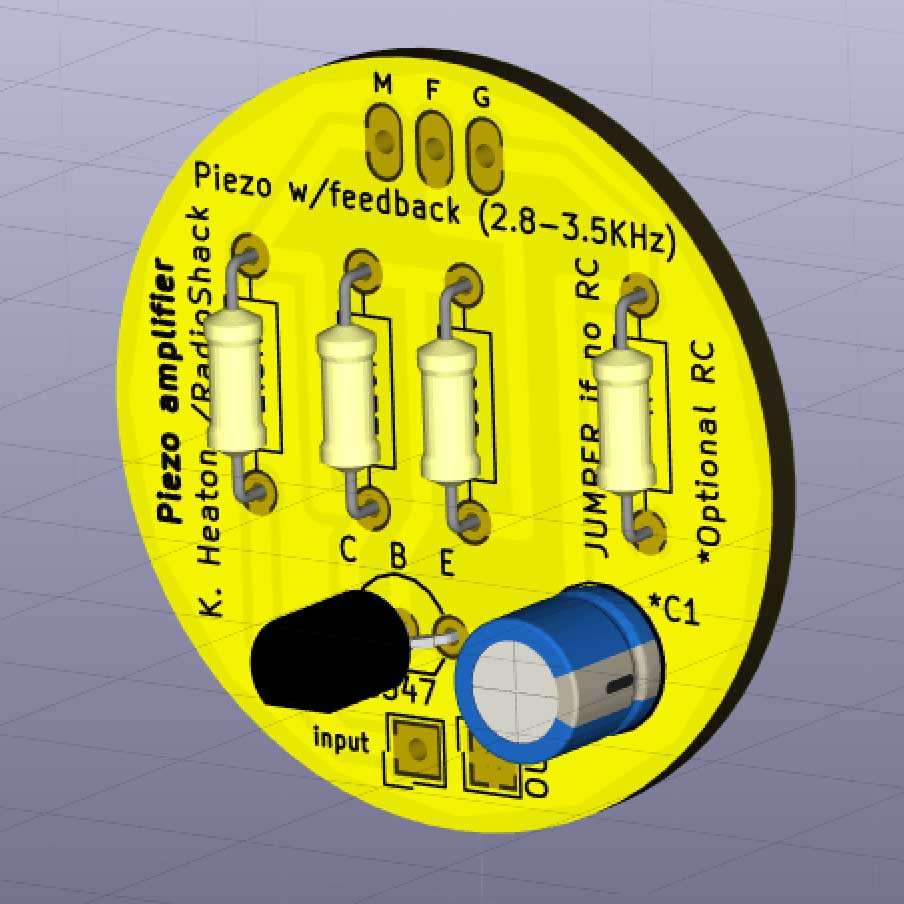The chorus of nature sounds that I generate relies on multiple low-cost speakers that I can distribute in space. Given my project goals, it makes no sense for me to use an audio mixer and a couple of Hi-Fi speakers --every one of my animal circuits has its own means to make noise, just like creatures do in nature. Sometimes, if I want to create a sound that is static-y or muffled, I will use a cheap 8 ohm speaker. But for the most part, I have found that piezo electric buzzers work best. Piezo disks can produce a clear, jingle-like timbre that is perfect for many types of crickets, tree frogs, bats, and birds.
I used piezo buzzers from RadioShack for at least a decade, notably parts #273-059 and #273-060, as their sound character is excellent for my application. However, these buzzers became hard to get when RadioShack went out of business and I sought a substitute part. After buying a few that I didn't like, I decided to reverse engineer the RadioShack buzzers and that turned out to be a blessing in disguise. Physical speaker design is a great way to affect electronic sound. In the following video, you can see me playing with the physical properties of a 2.8 KHz piezo with feedback.
Reverse engineering is a great teacher. First of all, I discovered that not all piezo disks are made equal. Some piezo elements have only two contacts and are best suited for electrical pick-up, like listening to faint sounds. I don't use those. The kind I use (and RadioShack) is a piezo element with feedback, which has three contacts: M (main), F (feedback), and G (ground).

Piezo disk elements have different resonances, so you need to get the right one for your sound. RadioShack buzzers are in the 2.8 - 3.6 Hz range. Digikey sells a variety of piezo elements with feedback in the 2.8 - 2.9 KHz range, for example. You can also find them on eBay or Alibaba.
Next, you need an amplifier for the piezo element. RadioShack buzzers include an internal amplifier circuit and I reverse engineered their design to make my own board. In my layout, all of the components are through-hole and the reverse side is a ground plane. Under my project files, you can find an image of my circuit schematic with descriptive annotations. I have provided a zipped folder of my Gerber files ("Piezo_amplifier2") that you can send out to a board manufacturer and have some of these made. I'm partial to PCBWay.


Once you've got your piezo element in hand and you have a way to amplify the sound (my circuit "Piezo_amplifier2" works for this), then you need a speaker housing. In a pinch, you can fashion something out of cardboard and tape.
I like to make my speaker housings with a vacuum former and laser cutter at my local MakerSpace, Nova Labs in Reston, VA. To do this, I first made a buck for the thermoformer out of laser cut rings that I stacked and glued in a pyramidal shape. Then I form .080" - .090" acrylic over the buck -- which requires some experimentation to get your settings right because acrylic wants to "bounce back" when you try to shape it. Use mold release! Finally, I laser cut the thermoformed shapes out of the vacuum formed acrylic sheet, also adding a hole in the middle for the sound to emerge. I cut round disk backings with holes for my wires. Hopefully the following video will clarify, and please also visit my blog for photos of the process to make the housing.
Notice how adjustments to the housing and pressure on the piezo element modify the sound.
I'm always on the lookout for new speaker designs, so please message me if you have ideas to share!
 Kelly Heaton
Kelly Heaton
Discussions
Become a Hackaday.io Member
Create an account to leave a comment. Already have an account? Log In.